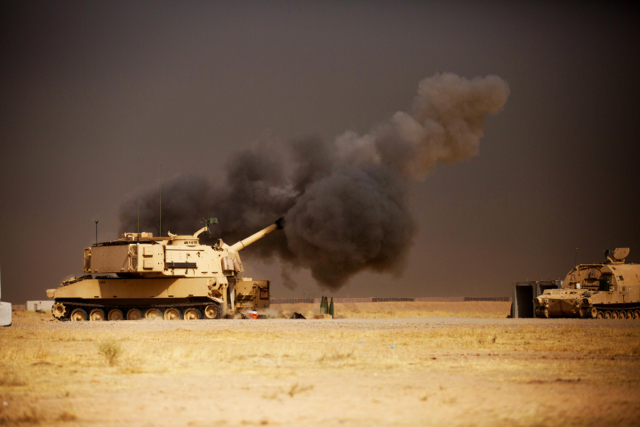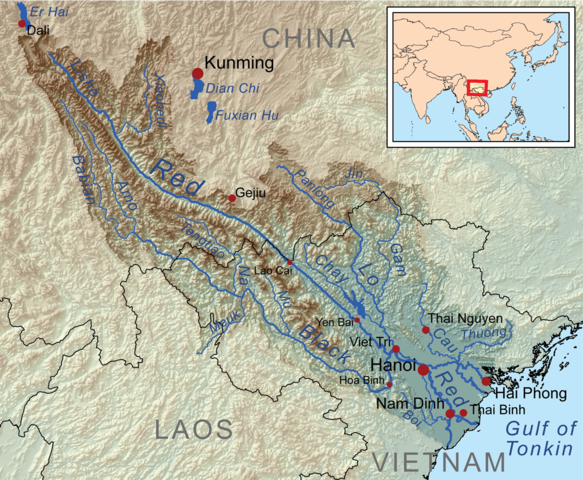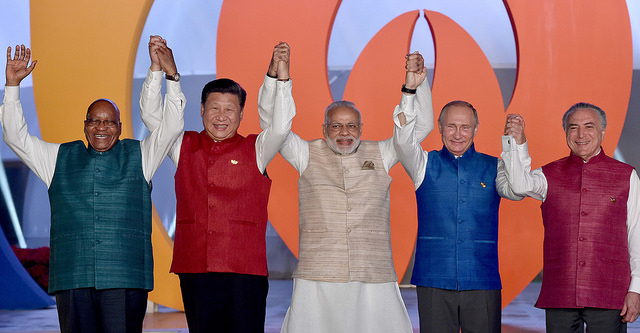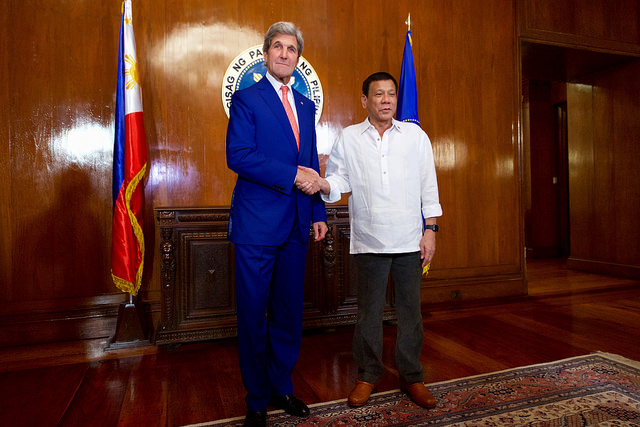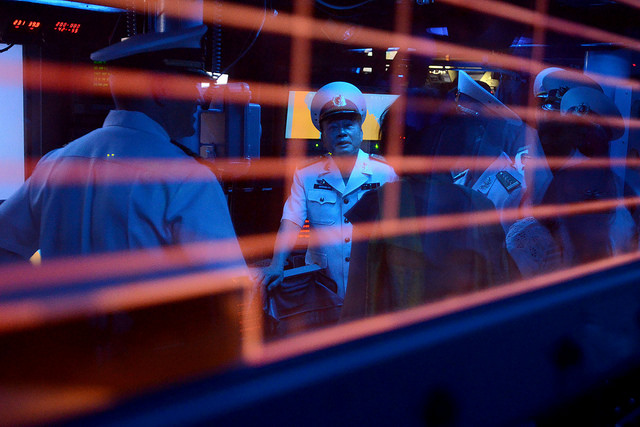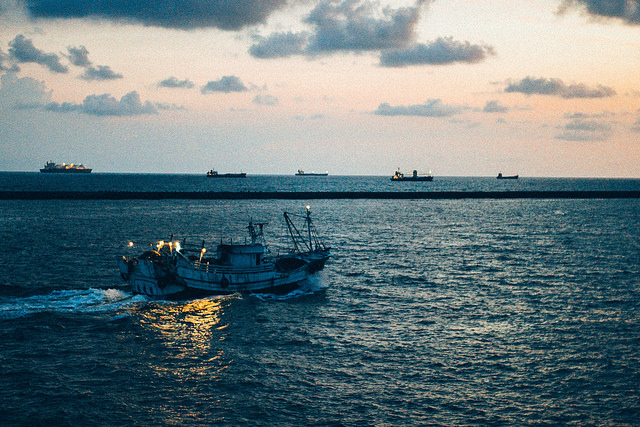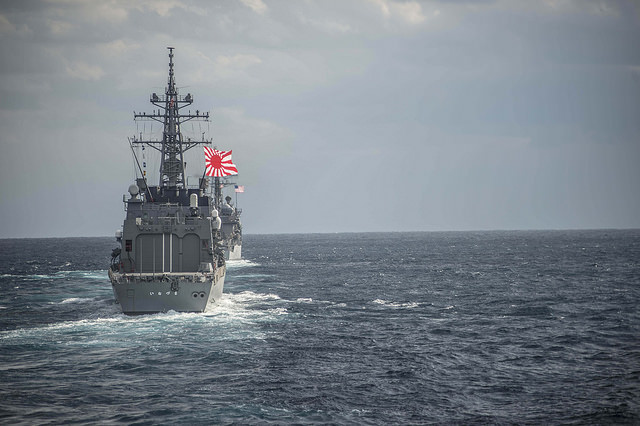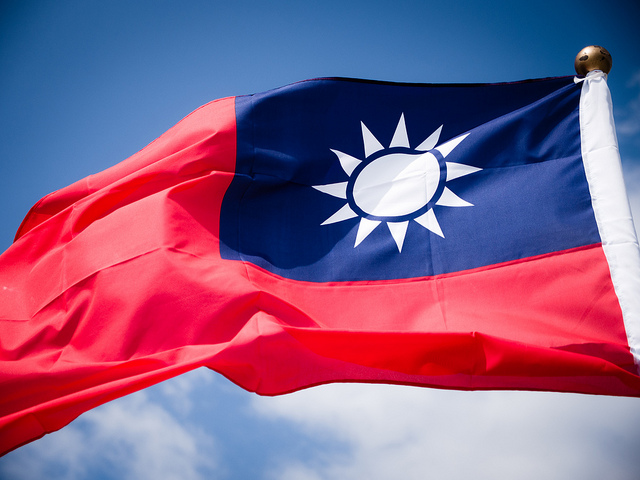David Parmer
The People’s Republic of China and Taiwan are separated by the Taiwan Strait, a body of water 180 km wide that connects the East China Sea with the South China Sea. But the gulf that sets them apart politically is immeasurable, and is widening every day. On the mainland, the PRC has taken a firm position on “One China” policy that seems to be hardening by the month, while Taiwan, thanks to the emergence of constantly and ever-deepening sense of Taiwanese identity, particularly among the younger generation, seems to be simply drifting away. In this article we will take a look at these two positions, and try to imagine where they could lead, and what possible positive outcomes, if any, may be possible.
- The Fixed and Unchanging Position of the PRC
What is China’s position on Taiwan? Is there an authoritative and definitive short answer to that question? Yes, there is, and it is supplied by none other than the President of the People’s Republic of China, Mr. Xi Jinping. In his 2014 book, The Governance of China, Mr. Xi states explicitly, emphatically and unequivocally China’s position on the status of Taiwan:
“For more than six decades now, although the two sides have yet to be reunited, we belong to one country and the same nation – a fact that has never changed, nor will ever change in the future. The blood of the Chinese nation flows in every one of us, and ours is forever the soul of the Chinese nation.”
“…the two sides must consolidate and hold fast to our common foundation of the ‘1992 Consensus’ and our opposition to ‘Taiwan independence,’ and be fully aware of the importance of maintaining the one-China framework. Such a foundation is the anchor for cross-Straits relations.”
“As far as any significant political differences between the mainland and Taiwan re concerned, we are willing to conduct consultations with the people of Taiwan based on equality within the one-China framework, and come to reasonable arrangements.”
(Speech delivered on February 18, 2014 when receiving Lien Chan, Honorary Chairman of the Kuomintang of China and his delegation.)
Another unequivocal presentation of the position of the PRC can be found on the website of the Ministry of Foreign Affairs of the People’s Republic of China. Under the heading “A policy of ‘one country, two systems’ on Taiwan.” the ministry states:
“Taiwan is a sacred and inseparable part of China’s territory…
In January 1979, Deng Xiaoping advanced the concept of “one country, two systems” and stated that “so long as Taiwan returns to the embrace of the motherland, we will respect the realities and the existing system there.” On September 30, 1981, Ye Jianying, Chairman of the Standing Committee of China’s National People’s Congress, officially put forward a nine-point proposal for bringing about the peaceful reunification of the mainland and Taiwan. He said that “after China is reunified, Taiwan may become a special administrative region. It may enjoy a high degree of autonomy and may keep its military forces. The national government will not intervene in the local affairs of Taiwan.” “Taiwan’s current social and economic systems will remain unchanged, its way of life will not change, and its economic and cultural ties with foreign countries will not change.’ “
Taiwan’s future lies in its reunification with the motherland, and attempt to split China will never be accepted as an alternative. Li Denghui and a small number of people in Taiwan who betray the principle of one China and advocate the creation of “two Chinas” or “one China, one Taiwan” in an attempt to split China are doomed to failure as they will surely run into the firm opposition of the entire Chinese people including the people of Taiwan. To accomplish China’s reunification is the trend of the time and common aspiration of the entire Chinese people across the Taiwan Strait. With the joint efforts of the entire Chinese people including the compatriots in Taiwan, the day will certainly come when China is reunified.”
Here is a third, recent statement of resolve on the part of the PRC. The following exchange is taken from a PRC Ministry of National Defense (MND) press briefing on May 26, 2016 by Senior Colonel Yang Yujun:
Question: Recently, Tsai Ing-wen assumed office as the leader of Taiwan region. In her inaugural speech, she didn’t clearly recognize the 1992 Consensus and acknowledge its core essence. Rumor has it that the PLA is going to hold large-scale military exercises aiming at deterring “Taiwan independence” forces. What is your comment?
Answer: On the question you have raised, like what was said by the head of the Taiwan Affairs Office of the CPC Central Committee and the State Council on May 20, we are today as determined as ever and more capable to safeguard national sovereignty and territorial integrity. We will resolutely contain any action and attempt by the secessionists for “Taiwan independence“. (Emphasis added)
From the above material we can get a clear and unambiguous understanding of the position of the PRC, the key points being:
- Taiwan is an inseparable part of Chinese territory
- The one-China 1992 consensus must be adhered to
- The PRC will accept no other course of action than re-unification
- A “one country, two systems” arrangement is possible for Taiwan
- Any unilateral declaration of Independence will be met with force
Viewed from the standpoint of best practices in negotiations, parties to a negotiation make the best results when they focus on shared interests rather than on strong positional negotiating.
In President Xi’s book, The Governance of China, we can see him hinting at shared interests when he suggests that both the PRC and Taiwan will benefit from better cross-Strait relations and both will share in the prosperity of a resurgent China. However, from the above bullet points we see that the PRC has taken several strong positions that it sees as non-negotiable.
China’s inducements to Taiwan for unification, then, include a share in the prosperity of China, a Hong Kong-style “one country two systems” arrangement, and the satisfaction of final unification with the motherland.
China’s negative inducements include isolation on the international stage by co-opting Taiwan’s few international allies, restrictions on travel and business, and the threat of the use of military force.
- The Changed Reality on the Other Taiwan Side of the Strait
The Emergence of the Taiwan Identity
On the other side of the Taiwan Strait, in Taipei and throughout the country, perceptions of Taiwan-PRC relations are somewhat different. While the PRC assumes it is dealing with a static entity, i.e. the Republic of China, the situation is changing almost daily. The biggest element is the constant and ever-evolving sense of a Taiwan identity. The existence of the Taiwan identity is not new, and even President Xi Jinping acknowledges it.
In The Governance of China, President. Xi writes:
“Due to their historical suffering and the distinct social environment in which they have lived, the people of Taiwan have their own mindset. They bear particular historical scars, they are eager to be masters of their own destiny, they cherish their established social systems and way of life, and they wish to live a stable and happy life. Putting ourselves in their place we can full understand their feelings.” (Together Fulfill the Chinese Dream of National Rejuvenation, Feb. 18, 2014).
The PRC, however, does not seem to be aware of the current meaning, extent and implications of the Taiwan identity and how it is changing the equation.
On the mainland, Taiwanese are seen as Chinese, but on the island, the perception is not only more nuanced, but is in constant flux. And this changed perception has profound implications for any discussion of reunification with the mainland.
On May 28, 2016, the Taipei Times reported a poll in which:
More than 80 percent of respondents self-identified as Taiwanese, compared with 8.1 percent who identified themselves as Chinese and 7.6 percent who identified as both in the poll, whose wording asked respondents if they viewed themselves as “Taiwanese,” “Chinese” or had “other thoughts.”
This 80% identification with being Taiwanese can be seen as a major factor in the sweeping victory enjoyed by the Democratic Progressive Party (DPP) of Tsai Ing-wen that swept into power both in the presidency and in the legislature in the January 2016 elections. Consistent with this is the assertion made by many observers that voters felt the pan-blue KMT was becoming too close to the PRC, and that the traditionally independence-minded DPP would better represent them.
The article went on to state:
When asked to choose between eventual independence and unification with China, more than 51 percent said they favored independence, while 15 percent favored unification and 25 percent favored maintaining the “status quo.”
(Taiwan Times, May 28, 2016)
The Fading of the Kuomintang, KMT
What the election also showed is that the Kuomintang, KMT is morphing into simply another (albeit robust) Taiwan political party, and is no longer a viable government-in-exile. Twenty-first century realpolitik and the voters of Taiwan seemed to have relegated the Republic of China to the history books.
These days, the fiction of the Republic of China, as either the legitimate government of all China, or there being any chance that all China, from Harbin to Hainan, will fall under its dominance, is wearing extremely thin.
During the early stages of the Cold War, American conservatives urged their government to “unleash Chaing Kai-shek” for re-conquest of the mainland. Those days are long gone.
The “1992 Consensus”
This being said, how can there be any substance to the “1992 consensus”?
From a certain point of view the “1992 consensus” is an agreement made between the PRC and an entity that is now simply another Taiwan political party. Although not stated explicitly, it may be that the DPP-led Tsai Ing-wen government sees itself as what the Japanese call “dai-san-sha” i.e., a third party, to the “1992 consensus.”
So what purpose does the “1992 consensus” have today? It is a working agreement that gives all parties “breathing room.” It is a face-saving fiction that permits all parties to pursue their interests without forcing a confrontation.
No Outright Endorsement by Tsai of 1992
Considering the above, is it any wonder that Tsai Ing-wen, in her inaugural speech did not endorse the “1992 consensus outright?
What Tsai did say was informative:
Since 1992, over twenty years of interactions and negotiations across the Strait have enabled and accumulated outcomes which both sides must collectively cherish and sustain; and it is based on such existing realities and political foundations that the stable and peaceful development of the cross-Strait relationship must be continuously promoted.
The new government will conduct cross-Strait affairs in accordance with the Republic of China Constitution, the Act Governing Relations Between the People of Taiwan Area and the Mainland Area, and other relevant legislation. The two governing parties across the Strait must set aside the baggage of history, and engage in positive dialogue, for the benefit of the people on both sides.
By existing political foundations, I refer to a number of key elements. The first element is the fact of the 1992 talks between the two institutions representing each side across the Strait (SEF & ARATS), when there was joint acknowledgement of setting aside differences to seek common ground. This is a historical fact. The second element is the existing Republic of China constitutional order. The third element pertains to the outcomes of over twenty years of negotiations and interactions across the Strait. And the fourth relates to the democratic principle and prevalent will of the people of Taiwan.
The question here is while Tsai references the Republic of China, does she believe in it, or is it simply an outmoded framework, an old vehicle that the owner must drive until she can afford to go to the car dealership and purchase a newer model?
Maginot-Line Thinking About Taiwan
And here is the point: pundits, journalists and scholars (and it seems even certain sections of the PRC government itself) have focused, with tunnel vision, on the question of Taiwan independence. This is reminiscent of France’s defense against Germany in the early 1940s–the Maginot Line. The Maginot line was a series of fixed defenses facing Germany whose guns could only be operated in one direction. As we know from history, that during the invasion of France, the German Wehrmacht simply went around the Maginot Line.
Likewise, “the experts” are focusing on formal Taiwan Independence, and like the French Republic in the 1940s they are looking the wrong way in a fixed and inflexible manner
Put another way, they are looking for a mechanical event, i.e. the outright declaration of Taiwan independence. What is actually happening is an organic and evolutionary event, the deterioration of the Republic of China (ROC) and the emergence of a country called Taiwan.
Taiwan’s Organic Evolution
“History will remember our courage. It will remember that in the year 2016 we took this country in a new direction.” (Tsai Ing-wen, Inaugural Speech)
It is incredible that so many people have read and commented on Tsai Ing-wen’s inaugural speech and simply missed the content by focusing on cross-Strait relations with a magnifying glass. It is as if they willfully refused to hear or understand the contents of her speech.
In that speech, President Tsai called for a new Taiwan society, a 21st century society that addresses current problems and looks to the future. In the speech Tsai listed a number of areas that need attention to move Taiwanese society forward and the solutions that her administration would put in place. What she laid out were a series of measures to make Taiwan more prosperous, more just and more livable for its citizens.
She began by defining the problems faced by Taiwan:
- Low birthrate
- Environmental pollution
- Poor fiscal situation
- Lack of confidence in the judicial system
- Inadequate food safety standards
- Wealth disparity
- Less than optimal social welfare system
- Low wages for young people
She then offered a menu of solutions for a 21st century Taiwan:
- A new model for sustainable development
- A new “Southbound Policy”
- Promotion of 5 industries to improve global competitiveness
- Care for resources and curb pollution
- Strengthen social security net including pension reform
- Establish a Truth and Reconciliation commission
- Promote judicial reform
- Address regional peace stability and development
- Manage cross-Strait relations
- Maintain existing dialogue under the 1992 agreement
- Proactively participate on the world stage
- Be a partner for the international community
What the speech outlines is Tsai’s bold plan for a new Taiwan society and a government that is organized to serve its citizens. Will the DPP’s plan be perfectly implemented? Time will tell. What we can grasp from the speech is the direction that Taiwan is heading and its priorities. From the speech it seems that Taiwan’s priorities are:
- Domestic issues relating to a prosperous and sustainable society
- Cross-Strait relations with the PRC and the 1992 Consensus
- Taiwan’s role on the international stage
What is not contained in the speech is any mention at all of Taiwan independence or any “return to the motherland.”
Her speech tells us that Taiwan is looking in many directions, and the view across the Strait is just one of them.
Adjusting to the New Reality
So, quite the opposite of opposing the status quo, the DPP seems quite content to have it continue. As the status quo continues, so does the evolution of Taiwan from being the Republic of China, to simply being a nation called Taiwan. This evolution can neither be slowed down nor stopped under existing conditions. As long as Taiwan and the DPP do not declare formal independence, it looks like China, in the short term, will take no forceful action, such as an invasion of Taiwan.
Let us return to our opening pages where China’s position was spelled out.
- Taiwan is an inseparable part of Chinese territory
- The one-China 1992 consensus must be adhered to
- The PRC will accept no other course of action than re-unification
- A “one country, two systems” arrangement is possible for Taiwan
- Any unilateral declaration of Independence will be met with force
If China holds these positions in an inflexible manner, then the question becomes: What can China do, and what will China do?
Supposing that Taiwan does not take any precipitous action, e.g. declaring independence or even promoting independence outright–which would result in military action on the part of the PRC– what courses of action are open to the PRC?
When Push Comes to Shove–A Timetable for Return
From the PRC point of view, this situation has dragged on, unresolved, for more than 70 years. The 1992 Consensus and the status quo are just stopgap measures, but they cannot continue forever.
For the PRC, then, the only answer would be a timetable for return. And this timetable could take two forms:
- A) A timetable agreed upon by the PRC and ROC which would probably be under the “one country, two systems” arrangement.
(This scenario would be much more likely should the KMT return to power in Taiwan, and there were warming cross Strait relations such as those promoted by the KMT’s President Ma during his term in office.)
- B) An unilateral timetable put forward by the People’s Republic with a deadline.
In this scenario, the PRC would claim that a failure to come to the negotiating table on the issue of a timetable for return would be seen as a de-facto declaration of independence by Taiwan. (And actions to curb “Taiwan secession” would be put in motion.)
In the coming years, the DPP might disappoint the voters, be involved in all sorts of scandals, and not deliver on Tsai’s magnificent promises, and consequently be voted out at the next election. This would make Plan A, above possible.
On the other hand, Tsai and the DPP might remain popular, or become even more popular, and be voted in for a second term. In which case, the current stalemate will continue, but as just mentioned, from Beijing’s standpoint, the situation cannot continue forever.
What will it take for China to implement Plan B? Right now China has a lot on her plate including the South China Sea issue, Tibet, Xinjiang, Hong Kong and Taiwan. Add to this North Korea and China’s slowing and evolving economy. What’s more, the intermittently-friendly Russian bear is always sniffing about on her northern border.
So what would trigger Plan B? The most likely would be a set of circumstances where China’s perceived national interest would call for the immediate return of Taiwan and for which the PRC would be willing to pay the highest price in terms loss of life, national treasure, and negative international reaction.
A Better Solution? Plan C
One solution that has been already rejected by the PRC in the case of Tibet, would be an extension of the “one country, two systems” model. If the PRC were to form a Commonwealth of China, or a Chinese EU, and grant economic flexibility and autonomy to Tibet, Xinjiang, Hong Kong and Taiwan in a kind of European Union, it would eliminate the problems it has with those four regions–immediately. It would have four strong allies on its flanks instead of having each of them like a stone in its shoe. Since “return to the motherland” has not been defined in minute detail, it may be the one point where the PRC has a chance to act in its own self-interest in a flexible manner.
This federated-China solution might be the one attractive option that would bring a DPP/ pan Green Taiwan to the table. The PRC can hope for a Plan A (above) and force a Plan B (above) or think outside the box and implement some form of Plan C.
Whatever the choice, it is time that all parties start to look at cross Strait relations in terms of reality and not ideology, sentiment or emotion.
Photo:威翰 陳 via flickr
 日本語
日本語 English
English 中国語
中国語